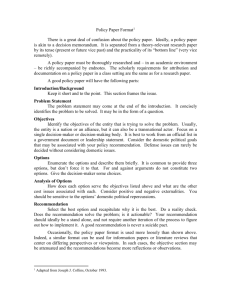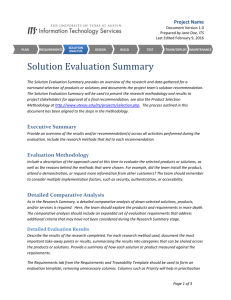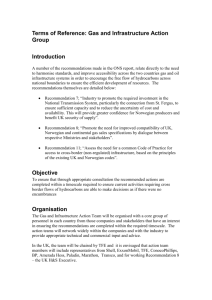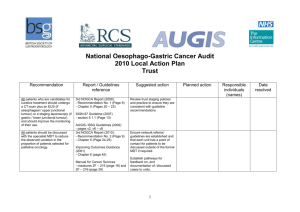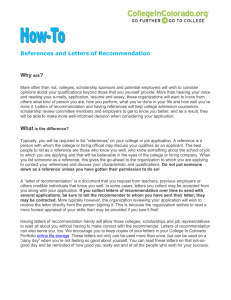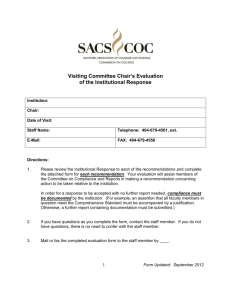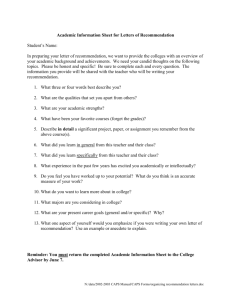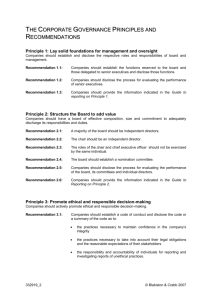E-HB-31-03C-JPH assessment
advertisement
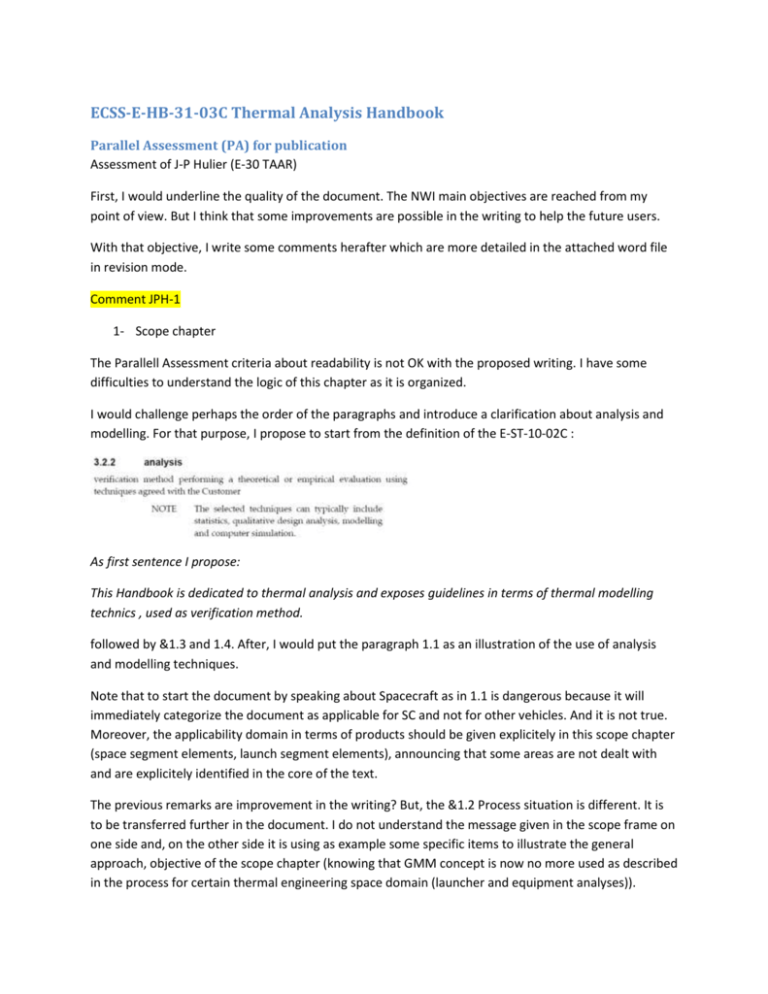
ECSS-E-HB-31-03C Thermal Analysis Handbook Parallel Assessment (PA) for publication Assessment of J-P Hulier (E-30 TAAR) First, I would underline the quality of the document. The NWI main objectives are reached from my point of view. But I think that some improvements are possible in the writing to help the future users. With that objective, I write some comments herafter which are more detailed in the attached word file in revision mode. Comment JPH-1 1- Scope chapter The Parallell Assessment criteria about readability is not OK with the proposed writing. I have some difficulties to understand the logic of this chapter as it is organized. I would challenge perhaps the order of the paragraphs and introduce a clarification about analysis and modelling. For that purpose, I propose to start from the definition of the E-ST-10-02C : As first sentence I propose: This Handbook is dedicated to thermal analysis and exposes guidelines in terms of thermal modelling technics , used as verification method. followed by &1.3 and 1.4. After, I would put the paragraph 1.1 as an illustration of the use of analysis and modelling techniques. Note that to start the document by speaking about Spacecraft as in 1.1 is dangerous because it will immediately categorize the document as applicable for SC and not for other vehicles. And it is not true. Moreover, the applicability domain in terms of products should be given explicitely in this scope chapter (space segment elements, launch segment elements), announcing that some areas are not dealt with and are explicitely identified in the core of the text. The previous remarks are improvement in the writing? But, the &1.2 Process situation is different. It is to be transferred further in the document. I do not understand the message given in the scope frame on one side and, on the other side it is using as example some specific items to illustrate the general approach, objective of the scope chapter (knowing that GMM concept is now no more used as described in the process for certain thermal engineering space domain (launcher and equipment analyses)). I propose a revised version of the scope chapter in the attached file. Comment JPH-2 Structure of Recommendations The idea to underline the recommendation by a sentence (grey format) is very good and should be better exploited in the writing approach: Even if not systematic, I understand the logic you used, with 3 steps: 1- Identification of an issue or a thema 2- Expression of a recommendation (in grey) 3- Justification of the proposed recommendation. The issue is that, sometimes, this logic is readable and sometimes not. For example, when there are no separation between the treatment of a recommendation and the following one we do not know if the text is speaking about the next recom or justifying the previous one. Moreover, some paragraphs are without underlined recommendation, but hidden guidelines without clear recommendation (§4.4.3 for exemple). The document would be more readable with a higher discipline in the recommendation identification. To implement a structure based on identified recommendation should bring some improvements. JPH-3 - reference Some automatic references are not active in the word file I recover and it was not possible to verify the correct reference. JPH 4 Uncertainty The applicability field of the figures given for uncertainty shall be clearly identified: it is not valid for cryogenics or high temperatures range. For me the criteria about common practices is not verified in that case. You will find in my comments in the attached file some cases to be corrected.

